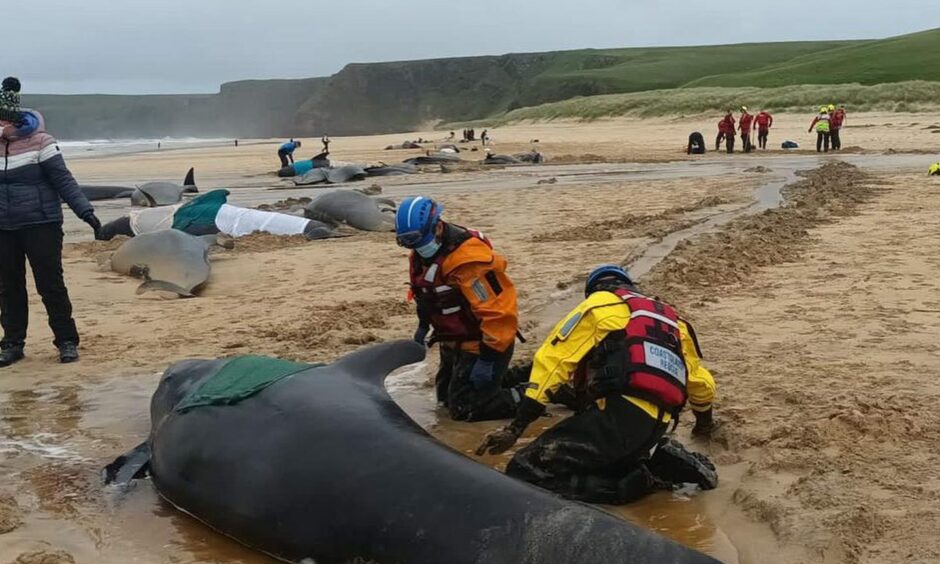Two more whales have been found dead on a beach, less than two weeks after a mass stranding near Stornoway.
The northern bottlenose whales were found beached on the shore near Culross on the Firth of Forth Fife at around midnight on Monday.
Due to the four-tonne weight of the cetaceans, it was too difficult to refloat the animals and both died.
It comes after 55 pilot whales got stranded died in Stornoway.
Now experts plan to compare the two incidents to try and work out why the whales – both normally seen much further off the coast – ended up beached.
Whales to undergo full post-mortem
It is unusual for the northern bottlenose whales to be so close to shore on the east coast of Scotland.
Dr Andrew Brownlow from the Scottish Marine Animal Stranding Scheme (SMASS) is hoping to investigate the deaths to find out what went wrong.
He told Good Morning Scotland’s BBC Scotland: “We are going to recover the animals and effectively do a full post-mortem on them, which is it’s about trying to understand obviously, why the animals have died.
“But also try and get as much information as we can about how healthy they were beforehand.
“If they were in good condition, what they’ve been feeding on, and looking for any evidence of disease or infections that might have explained the reason that they’ve stranded.”
Could the beached Lewis whales help explain what happened in Fife?
The beach whales in Fife come after 55 whales died in a mass stranding near Stornoway on July 16.
Among the dead on the Western Isles was a female whale who had suffered a vaginal prolapse.
Experts believe the whole pod – comprising of both adults and calves – became stranded as the female tried to give birth.
Despite the Lewis whales being longfin pilot whales, and the Fife whales being northern bottlenose, Mr Brownlow hopes the previous incident can shed light on what happened.
He said: “There are some commonalities. They are both deep-diving species and them being seen from the coast of Scotland is relatively unusual.
“One of the things we want to look at is why have animals that are normally seen well off the coast, like on the continental shelf edge, what is what is bringing them into these waters where they run the risk of stranding.”
Push and pull factors to blame for beached whales
Mr Brownlow believes the beachings could have been caused by a number of either push or pull factors.
Pull factors include behaviours such as following prey such as squid, although he notes it is unusual for squids to be so close to shore.
Push factors include being moved from their natural habitats by predators or underwater noise from oil and gas or military sonar. Noise effects such as sonar effects the animal’s ability to communicate.
To look closely at SMASS’s work, visit its website.

